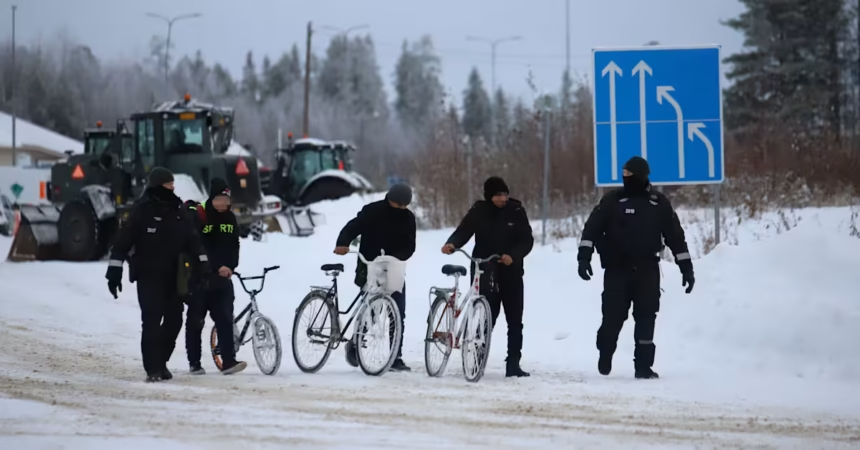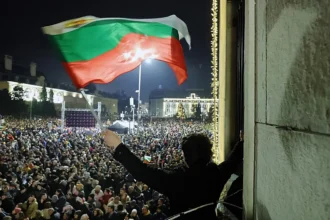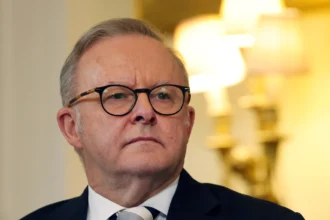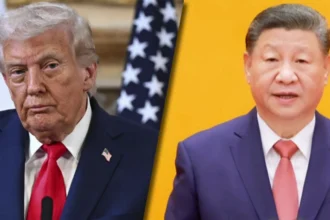For decades, South Karelia, a tranquil region of lakes, forests, and small towns nestled along Finland’s 1,300-kilometer border with Russia, thrived on a delicate balance of geography and commerce. Just a few hours’ drive from St. Petersburg, the region became a gateway for Russian tourists, investors, and trade — a living testament to Finland’s pragmatic coexistence with its powerful neighbor.
Today, that symbiosis has vanished.
Since Russia’s invasion of Ukraine in 2022, the border that once symbolized opportunity has become a line of fear and uncertainty. Crossings have closed, tourism has collapsed, and regional economies once dependent on Russian spending are struggling to reinvent themselves. The sense of mutual benefit that defined Finnish-Russian border relations for thirty years has been replaced by unease, vigilance, and an undercurrent of mistrust.
In South Karelia, a region closer to St. Petersburg than to Helsinki, that transformation feels deeply personal. What was once an economic lifeline is now a geopolitical fault line.
A Prosperous Past, Built on Proximity
Before the war, Lappeenranta — the capital of South Karelia — was a bustling hub of cross-border activity. Russian shoppers filled malls and supermarkets, local hotels thrived on weekend getaways, and small businesses catered to visitors seeking European products and services unavailable at home.
According to pre-war estimates, up to 20% of the region’s retail sales came from Russian consumers. Entire sectors, from real estate to logistics, revolved around cross-border movement. Joint cultural projects, student exchanges, and infrastructure cooperation reflected a quiet confidence that Finland could maintain friendly, if cautious, relations with Moscow.
All that changed overnight in February 2022.
When Russia launched its full-scale invasion of Ukraine, Finland — a nation historically neutral but ever pragmatic — swiftly aligned itself with the West, applying for NATO membership and reinforcing border security. The move marked the end of an era for regions like South Karelia, where integration with Russia had once seemed both natural and profitable.
The Border Closes — and So Does an Era
The closure of the Southeast Finland border crossings has hit the region hard. Towns like Imatra and Lappeenranta, once pulsing with visitors and commerce, now face empty hotels, shuttered shops, and fading optimism.
“The silence is eerie,” says one hotel owner in Imatra, whose business once relied on weekend traffic from St. Petersburg. “We used to hear Russian spoken everywhere — in shops, cafés, at the spa. Now it feels like the border never existed, except for the fear it represents.”
The Finnish government, citing security risks and hybrid threats, has kept border restrictions in place despite economic pleas from local leaders. Authorities have accused Russia of orchestrating migrant flows and disinformation campaignsalong the frontier — a tactic viewed as part of the Kremlin’s broader effort to destabilize Europe.
Residents who once saw the border as an asset now regard it with unease. “It used to connect us,” says a teacher in Lappeenranta. “Now it feels like a wall.”
Economic Wounds and Political Realities
The disappearance of Russian commerce has left a gaping hole in South Karelia’s economy. Hotels report occupancy levels below 40%. Small retailers have downsized or closed. Even logistics companies — once buoyed by freight traffic to and from Russia — have been forced to pivot toward new markets.
According to Finland’s Chamber of Commerce, border regions lost hundreds of millions of euros in revenue following the suspension of cross-border trade and tourism. Local municipalities, heavily reliant on those tax revenues, have been forced to cut budgets and delay infrastructure projects.
Yet despite these hardships, few residents advocate for a return to the old normal. The shock of the war — and the recognition of what Russia’s aggression means for regional security — has hardened attitudes.
“Economics can’t outweigh principles or safety,” says South Karelia’s regional governor. “We built trust for decades, and it evaporated in a week. That’s not something we can rebuild with visa-free travel or trade deals.”
Fear Replaces Familiarity
While large-scale military aggression against Finland is seen as unlikely — especially after its accession to NATO — the psychological impact of proximity to Russia runs deep. Local residents speak of a subtle but persistent anxiety.
Reports of Russian drones crossing Finnish airspace, mysterious GPS jamming near the border, and cyberattacks targeting municipal networks have amplified the sense of vulnerability. Some schools have introduced lessons on hybrid warfare and digital safety.
“We used to look east and see opportunity,” says a university lecturer in Lappeenranta. “Now we see risk — not just political, but existential.”
At the same time, the region’s location has taken on strategic importance within NATO. Military exercises have increased, and new defense infrastructure is being developed. For many locals, the sight of NATO troops training near the border is both reassuring and surreal.
Reinvention and Resilience
Faced with economic loss and geopolitical tension, South Karelia is now striving to reinvent itself. Local leaders are investing in green technology, logistics diversification, and cross-border research with the EU, hoping to reduce the region’s historic dependence on Russia.
The city of Lappeenranta, long a champion of environmental innovation, has redoubled efforts to attract European investment in renewable energy and digital startups. Universities are seeking partnerships with Western institutions. Tourism campaigns now target domestic and European visitors instead of Russians.
Still, recovery will take time. “We can’t replace an entire economy overnight,” admits one local entrepreneur. “But we can learn from what happened — and make sure our future doesn’t depend on a country that doesn’t respect borders.”
A Symbol of Finland’s Transformation
The story of South Karelia mirrors the broader transformation of Finland itself. For decades, the country pursued a careful balancing act — maintaining defense readiness while nurturing pragmatic ties with Moscow. That balancing act is over.
Finland’s NATO membership marks not just a strategic pivot, but a psychological shift — from coexistence to containment, from cautious engagement to clear-eyed deterrence. The border, once a line of commerce and curiosity, is now a front line of principles.
For many in South Karelia, that realization has come with both sadness and strength. “We miss the old days,” says a retired shopkeeper. “But we understand now that they were built on an illusion — that Russia was a normal neighbor. It wasn’t.”
A Future Defined by Distance
As winter approaches and border posts remain quiet, life in Finland’s southeastern frontier has settled into a new normal — one defined not by trade, but by vigilance and self-reliance.
Where Russian license plates once filled parking lots, there are now NATO flags. Where local shops once sold souvenirs to tourists from St. Petersburg, they now sell Finnish goods to Finnish customers. The economy may be smaller, but the sense of sovereignty feels stronger.
And while the people of South Karelia know that their geography will always tie them to Russia, they also know that their future lies firmly in the West.













